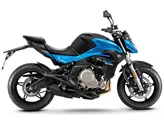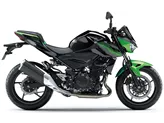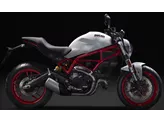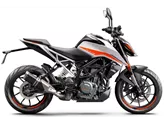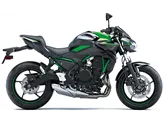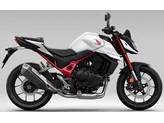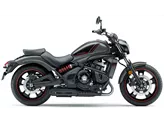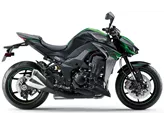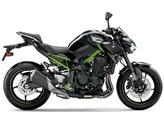Kawasaki Z650 2017 vs. Kawasaki Z 300 2016

Kawasaki Z650 2017

Kawasaki Z 300 2016
Overview - Kawasaki Z650 2017 vs Kawasaki Z 300 2016
The Kawasaki Z650 2017 and the Kawasaki Z 300 2016 are both naked bikes with similar engine types, cooling systems, and frame materials. However, there are several key differences between the two models.
In terms of engine power, the Z650 has a significant advantage over the Z 300. With 68.2 HP compared to the Z 300's 39 HP, the Z650 offers a more powerful and exhilarating riding experience. Additionally, the Z650 has a higher torque of 65.7 Nm compared to the Z 300's 27 Nm, further enhancing its performance capabilities.
When it comes to dimensions and weights, the Z650 is slightly larger and heavier than the Z 300. The Z650 has a wheelbase of 1410 mm and a seat height of 790 mm, while the Z 300 has a wheelbase of 1405 mm and a seat height of 785 mm. The Z650 also has a higher kerb weight of 185 kg (187.1 kg with ABS), while the Z 300 weighs 168 kg (170 kg with ABS). These differences in size and weight may impact maneuverability and ease of handling.

Kawasaki Z650 2017
In terms of braking technology, both models feature double piston front brakes with petal technology. This ensures efficient and reliable braking performance for both the Z650 and the Z 300.
When it comes to tire specifications, the Z650 has a wider front tire width of 120 mm compared to the Z 300's 110 mm. The rear tire width of the Z650 is also wider at 160 mm compared to the Z 300's 140 mm. Both models have the same tire diameter of 17 inches.
Another notable difference is the fuel tank capacity. The Z650 has a fuel tank capacity of 15 liters, while the Z 300 has a larger capacity of 17 liters. This means that the Z 300 may have a longer range before needing to refuel.

Kawasaki Z 300 2016
In terms of strengths, the Z650 offers an even power delivery, a sporty chassis, compact dimensions, and a negative display. On the other hand, the Z 300 has an adult look, high-quality finish, high-revving engine, comfortable seating position, stable brakes, an easy-to-read complete cockpit, and low fuel consumption.
However, there are also weaknesses associated with each model. The Z650 may be a little too small for tall people, while the Z 300 has a very unobtrusive sound and its engine only starts when idling.
In conclusion, the Kawasaki Z650 2017 and the Kawasaki Z 300 2016 have distinct differences in terms of engine power, dimensions, weights, tire specifications, and fuel tank capacity. Each model has its own strengths and weaknesses, catering to different preferences and riding styles.
Technical Specifications Kawasaki Z650 2017 compared to Kawasaki Z 300 2016
Pros and Cons in comparison
Pros and Cons in comparison
Kawasaki Z650 2017

The Kawasaki Z 650 is the tip of the middle class for small male and female riders. On its compact dimensions, you probably won't feel comfortable as a giant. Heart-warming feelings, however, come from the engine, which delights with a very smooth pull. On the chassis side, a Kawasaki-typical tight set-up was chosen, which finds a great compromise in everyday use. The negative display is very easy to read and is reminiscent of its predecessor, the ER-6n - very nice!
Kawasaki Z 300 2016

The cool design of the Kawasaki Z300, which is extremely similar to that of its big sister Z800, makes it a very grown-up-looking motorbike. The stable braking system and the easy-to-read cockpit with an analogue rev counter and all the necessary features fit in very well with this image. Thanks to the 170 kg ready-to-ride weight, the bike is extremely easy to handle and playful. The engine only reveals its potential in the upper rev range, but revs up willingly and makes you want to ride in a sporty manner. Only the comfort-oriented chassis cannot quite cope with radically sporty demands - but this is quite legitimate and understandable for an entry-level motorbike.
Price Comparison Avarage Market Price Kawasaki Z650 vs Kawasaki Z 300
There are a few key differences between a Kawasaki Z650 2017 and a Kawasaki Z 300 2016. There are the same number of bikes of both models available on the 1000PS.de marketplace, specifically 11. It takes less time to sell a Kawasaki Z650 with 76 days compared to 88 days for a Kawasaki Z 300. Since model year 2017 1000PS.de editors have written 31 reviews for the Kawasaki Z650 and 5 reviews for the Kawasaki Z 300 since model year 2015. The first review for the Kawasaki Z650 was published on 11/8/2016 and now has more than 25,000 views. This compares to more than 59,800 views for the first review on Kawasaki Z 300 published on 11/4/2014.



